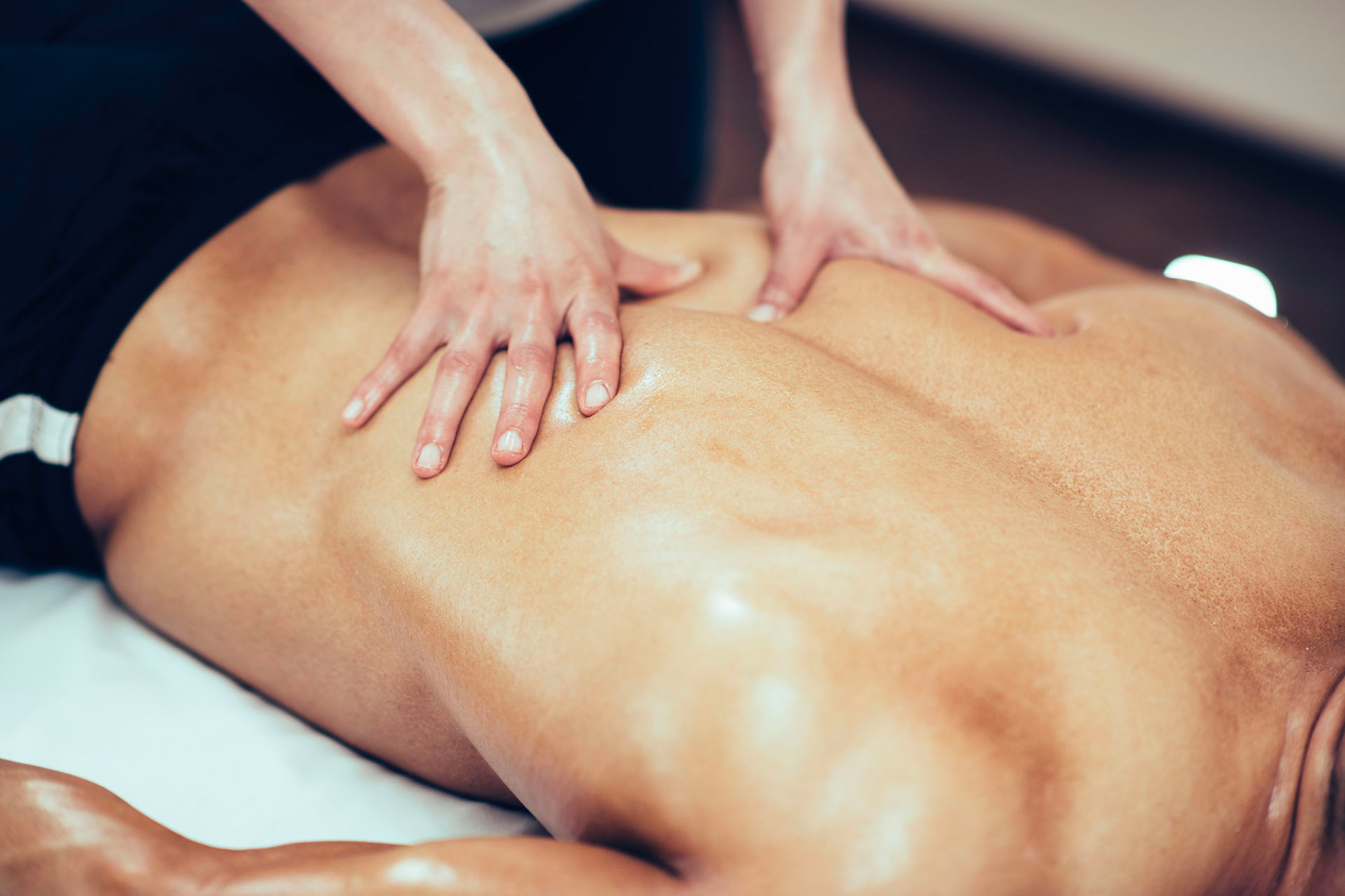We often sit for prolonged hours in modern life, staring at phones and laptop screens, unaware of their impact on our bodies. The reality is that this has taken a toll on the average Australian, with 1 in 6 Australians suffering from chronic back pain.
We are not just talking about the aesthetics of good posture, but more importantly, its impact on our health and well-being. The fact is that good posture reduces the risk of various medical complications, whether it be now or later down the track.
We’ve brought together this ultimate guide to uncover the origins of poor posture, why it matters, and how you can get your posture corrected with proven exercises and proper chiropractic treatment.
In this guide, we’ve outlined what you need to know to start your road to improving your posture, being more confident, and transforming your overall quality of life.
The Science of Posture
How you stand, move and project your body is a complex connection of various physical factors. From spine alignment to muscle strength, your posture is crucial to governing how you feel and behave daily.
Muscle Fibres
Your body’s muscle fibres lie at the core of your posture. These fibres are significant in achieving a proper posture since they are responsible for stability and motion.
There are two types of muscle fibres. They include:
- Static Fibres: Also known as slow-twitch fibres, they are found in deep muscle layers and are necessary for maintaining posture with less effort.
- Phasic Fibres: Known as fast-twitch fibres and are responsible for movement and activity.
These combinations of slow and fast-twitching muscle fibres are responsible for your posture and movement in day-to-day activities.
Active Postures
When you rest, sleep, or become a couch potato, your inactive posture takes care of muscular activity. But your muscles perform active postures when you’re walking, running, sitting, or virtually doing anything other than sitting.
There are two fundamental types of active postures. They include:
-
Dynamic Posture
This refers to your body’s reaction during motion and takes charge to maintain alignment. Whether running, walking, or dancing, your dynamic posture controls how you move freely. An optimal dynamic posture should require the least force to execute the motion and minimise the chance of injury.
-
Static Posture
This refers to your body’s natural alignment/posture at rest or stationary, such as standing or sitting. You will know if you have achieved the proper static posture when your body can keep alignment without unnecessary tension.
Lumbar Lordosis: Loving your curves
Lumbar lordosis is the natural arch or inward curve of your lower spine. When the lordosis is excessive, we often refer to this as a swayback. An extreme lordosis causes your abdomen (tummy area) to stick out and your pelvis to curve back & upwards.
There are five common causes of excessive lordosis:
1. Postural Lordosis
Often caused by obesity and lack of muscle engagement in abdominal and back muscles. If you carry too much weight in your stomach area, it naturally pulls and curves your back/spine forward.
2. Congenital/Traumatic Lordosis
A trauma or spine injury may cause breaks or fractures, causing lower back pain. This is common among contact sports athletes and people involved in accidents or falls.
Over time, these spine links will develop with growth, but if they don’t heal properly, they may end up misshaped and weak and develop a break in bone connection.
3. Post-surgical Laminectomy Hyperlordosis
A laminectomy is a surgical process where parts of the spine links are removed to access the spinal cord. In recovery, there’s a chance that the spine may become slightly unstable and result in a swayback curve.
While this is rare among adults, children who undergo this procedure are more vulnerable to developing hyperlordosis.
4. Neuromuscular Lordosis
This involves a range of conditions and disorders that lead to spine curvature problems. Moreover, treatments will vary depending on the neuromuscular condition.
5. Lordosis Secondary to Hip Flexion Contracture
Some patients developed a contracture or hardening of the hip joints, pulling the spine out of alignment. Hip flexion contracture can be acquired from infection, muscular imbalance, and injury.
To know more about lordosis and whether you have a normal spine curve, book an appointment with us today or call us at 0421 151 778.
Winged Scapula: Normal or Not?
Your shoulder blade or scapula is a sturdy, flat triangular bone in your upper back. It forms the posterior of the shoulder girdle and is a crucial junction to several groups of muscles.
However, improper posture, movement irregularities, and, in rare cases, injury can lead to your scapula sticking out. This is called a winged scapula and occurs when shoulder blade movement is abnormal.
Nerve problems and weak muscles are common causes of a winged scapula. Regardless of its cause, it severely impacts your posture and limits your overall shoulder function.
Severe or unexpected winging calls for a professional diagnosis to get proper treatment if necessary. Book an appointment with us today or call us at 0421 151 778 to get a proper chiropractic diagnosis.
What Makes a Good Spine Posture
It may sound quite straightforward on the surface level however, for some Australians, there is a great deal of effort that goes into achieving and maintaining a good posture.
Here are the common factors involved in achieving great spine posture:
- Balance – Even distribution of your body weight between both feet when standing, levelling your hips and shoulders.
- Alignment – These include maintaining your spine’s natural curves, the cervical (neck), thoracic (upper back), and lumbar (lower back) curves when observed from the side.
- Head Position – Let your position right above your shoulders without extending forward or leaning to the side.
- Core Engagement – By engaging your core muscles, support your spine and uphold stability.
Why Good Posture Matters
Quick posture check! Take a look at your posture while reading this article.
Good posture isn’t all about looking confident and standing upright. Good posture matters because its health benefits and impact on your skeletal well-being.
Good Standing Posture
Standing tall and upright is one of the most important parts of good posture. It helps improve your overall spine health and allows muscular balance, efficient breathing and proper digestion. These are all critical factors in maintaining a healthy and long life.
Recommended Sitting Posture
Here are recommended posture tips to help minimise the negative impacts of prolonged sitting:
- Relax your shoulders and sit with your back upright. Make sure to support your lower back with a cushion or chair’s lumbar support.
- Position your chair so your feet are flat on the floor or a footrest and your knees are at or somewhat beneath hip level.
- Reduce the tension on your neck and upper back by adjusting your computer monitor at eye level.
- Maintain a close distance between your elbows and body, and keep your keyboard and mouse comfortable enough to form about a 90-degree angle.
Best Sleeping Posture to Prevent Morning Pains
Ever woke up with a sore back and neck pain? You can try these sleeping posture correction tips to feel comfortable when waking up in the morning:
- Put a supportive pillow under your head and a smaller pillow under your knees when sleeping on your back.
- Use a firm pillow to support your neck and maintain your spine alignment when sleeping. Lessen the pressure on your hips by putting a pillow between your knees.
- Avoid sleeping on your stomach
- Invest in a quality mattress and pillow
- Replace your pillows regularly to ensure support for your neck and head.
Signs and Symptoms of Bad Posture
They say life begins at 40—but so does joint and back pain. All of us have had neck and lower back pain before, but when it gets too frequent, worse, and highly uncomfortable, it may hinder our ability to perform basic daily tasks.
Understanding how to prevent back pain with good posture and the signs and symptoms of bad posture is essential to addressing the underlying issues.
Here are some warning signs you should look out for:
- Muscle Fatigue
- Pain and Discomfort
- Backache
- Headaches
- Impaired Balance
- Digestive Issues
- Breathing Difficulties
- Reduced Range of Motion
- Round Shoulders
Movements Impaired by Bad Posture
Bad posture affects your overall range of motion and physical capabilities. This can commonly be seen in:
- Muscle Fatigue – Improper posture can result in muscle fatigue in the long run if not addressed accordingly. This can be a discomfort in your everyday tasks.
- Reduced Flexibility – It can restrict your joints’ movement and make it difficult to twist, bend or reach. Muscle fatigue
- Imbalances – Bad posture also impacts your body’s centre of gravity, increasing the risk of falls.
Rounded Shoulders: Spotting and Treatment
Diagnosing and treating rounded shoulders is necessary. It is a common sign of bad posture resulting from slouching while sitting for long hours working on a computer.
- Spotting Rounded Shoulders – Take notice of forward-curving shoulders and a rounded upper back.
- Treatment – Strengthen your upper back muscles, particularly the trapezius and rhomboids, to improve rounded shoulders. Try also stretching your chest muscles for added benefits.
Forward Head Posture Improvement: What It Is and How to Improve It
If you’ve spent too much time looking at your phone, playing video games, or carrying a heavy backpack and are experiencing frequent neck pain, you may have a habit of ‘forward head posture’.
Forward head posture is often the result of the head extending from its natural spine alignment due to lengthy periods of facing down or slouching.
Here’s a quick check: See if your earlobe is aligned with your shoulder. It should be slightly forward if you have a forward head posture.
Chin tucks work too! Lean your chin towards your chest and hold it for a few seconds. Doing this may help you improve and treat forward head posture.
For a more thorough forward head treatment and spine alignment, book an appointment with us today or call us at 0421 151 778 for a proper chiropractic diagnosis.
Pelvic Tilt: Treatment and Prevention
Pelvic tilt (PT) is the orientation of your pelvis for the thighbones. You may have an anterior or posterior pelvic tilt depending on different musculoskeletal and posture factors.
- Anterior Pelvic Tilt – The pelvis tilts forward, creating an excessive arch in the lower back. Tight hip flexors, weak glutes and abdominals may cause this condition.
- Posterior Pelvic Tilt – In contrast, a posterior pelvic tilt occurs when the pelvis tilts backward, causing a flattened lower back. Hamstring tightness and weak hip flexors are the potential culprits of this problem.
Targeted exercises for weak muscle strengthening, tight stretching, and proper sitting and standing positions can help ease and treat both types of pelvic tilt.
Does Exercise Help Improve Posture?
Exercise can help you improve and maintain a healthy posture. Targeted exercises strengthen the muscles that control posture and enhance flexibility and balance.
Morning Stretches for Posture Correction
Your journey to better posture can start by stretching in the morning. Morning stretches help warm your body, increasing flexibility and boosting blood flow.
Here’s a set of morning stretches to help you get started:
- Neck Stretch – Tilt your head gently from left to right, forward, and backward to relieve neck strain.
- Child’s Pose – Stretch your back and relax by sitting back on your heels with your arms extended.
- Cat-Cow Stretch – Alternately, you can do cat-cow stretches. On all fours, gently exhale and contract your abdominal muscles as you push your spine towards the ceiling. During the downward (cow) phase, relax and let your stomach fall towards the floor, arching your lower back and allowing your shoulder blades to move towards the spine.
- Chest Opener – Stand straight with your hands locked behind your back and gradually raise your arms to open your chest.
- Thoracic Extension – Place your hands behind your head while sitting or standing and slowly arch your upper back backward.
Recommended Exercises to Improve General Posture
Incorporating specific workouts into your exercise routine will considerably help you improve your posture. These beneficial exercises are a must-try:
Planks
- Lie prone on your stomach on a yoga mat or floor. Put your elbows close to your sides and under your shoulders.
- Extend your legs and pull your toes towards your shins.
- Contract your core and abdominal muscles to stiffen your torso.
Glute Bridges
- Lie supine on an exercise mat or floor with your knees bent and feet slightly spread out and flat on the floor.
- Gently contract your ab muscles throughout the exercise.
- Press your hips upwards and extend this motion by contracting your glutes (butt muscles).
- Avoid pushing too high as this may increase arching in your lower back.
- Slowly lower your back towards the starting position. Repeat the exercise.
Shoulder Blade Squeezes
- Raise your arms to shoulder height with elbows bent and palms facing forward
- Squeeze your shoulder blades together by moving your arms backwards
- Hold this position for 10 seconds and return to the starting position
- Repeat this exercise.
Wall Angels
- Lean with your back against the wall. Stand with your feet about 20 cm away from the wall.
- Rest your butt, back, shoulders, and head against the wall
- Draw your belly inwards so your spine touches the wall. This ensures you begin the exercise with a neutral spine.
- With your arms straight up and starting at a 90-degree angle, palms facing outwards, slowly reaching straight up and overhead.
- Slide your hands back down by bending your elbows until your elbows are just below your shoulders.
- Make sure your butt, back, and head are against the wall throughout this exercise
- Hold your arms at the end of each motion and repeat this exercise.
Next Step: Improving Strength Through Exercise & Training
Improving your overall strength through exercise and training significantly affects your well-being.
While there are various activities you can try, such as strength training, cardiovascular exercises, yoga and pilates, it’s greatly important to consult a medical professional for best-recommended treatments.
Don’t hesitate to seek the advice of a fitness trainer, a physical therapist or a chiropractor if you’re unsure of the best workouts for your particular posture problems. You can also consult them, especially if you suffer from persistent pain and discomfort.
Before you start any targeted exercise or training, seek a professional sports chiropractor to ensure you get the right treatment and diagnosis and avoid further complications in your posture.
Book an appointment with us today or call us at 0421 151 778 to get a proper chiropractic diagnosis.
Impact of Bad Posture on Health
A bad posture invites various underlying health problems requiring immediate treatment to reduce complications. If you’ve ignored the early signs of neck and back pain for a while, it may put unwanted pressure on your spine and lead to chronic discomfort and pain.
1. Neck Pain & Back Pain (Upper & Lower)
Your neck and back basically carry the weight of your upper body. This makes them the common sites for bad posture and pain. Bad posture puts pressure on several links in your neck and spine, causing painful discomfort and sometimes piercing or pulsating pain.
- Upper Back Pain: You may strain your upper back and neck muscles by slouching or rounding your shoulders. It can cause discomfort and stiffness, leading to chronic pain when not addressed immediately.
- Lower Back Pain: You can experience lower back pain from insufficient lumbar support or an unbalanced posture when sitting for extended periods. Dealing with such an issue is crucial as it might become incapacitating over time.
2. Headache Due to Bad Posture
Forward head posture, slouching, and other bad postures strain your neck muscles and joints, which could lead to headaches. Tension headaches may result from bad posture, especially forward head posture.
That’s because the muscles in your neck and upper back have to work harder to maintain the weight of your head when your head juts forward. This condition can cause muscle stress and discomfort that can travel into your brain, causing headaches.
3. Upper Cross Syndrome
An imbalance of upper body muscles is a common symptom of Upper Cross Syndrome, a disorder specifically linked to bad posture. Typically, it triggers some muscles to be overactive and tight while others are underactive and weak.
Round shoulders, stiff neck, and a forward-facing head posture are frequent signs of Upper Cross Syndrome. This disorder can also limit your shoulders’ range of motion.
4. Lower Cross Syndrome
Another condition, called the Lower Cross Syndrome, also has to do with posture and involves the lower back and pelvis. It happens due to an imbalance between strong, underactive and tight, hyperactive muscles.
One symptom of lower cross syndrome is an anterior pelvic tilt in which the pelvis leans toward the front and accentuates the lumbar curvature. You may experience lower back pain and hip discomfort due to this condition.
Posture Treatment Procedures
Taking steps to address poor posture requires more than just being aware of the issue. You must know the best posture correction tips for an effective guide to perfect posture.
There are some treatment procedures that you can engage in to improve your posture and overall well-being.
Posture Correctors & Braces
The purpose of posture correctors and braces is to support, direct, and remind you to maintain good posture. They are especially beneficial for people who need help retraining their muscles and straightening their spine.
These devices are designed to encourage shoulder retraction, straighten back, and align the spine to your head.
You can choose from various options, from simple straps to more specialised wearable posture correctors and braces. You can even wear one under your clothing or when sitting or exercising.
Although posture correctors and braces can be helpful, you have to pair them with activities that improve posture and not as a permanent fix. Using these devices solely without treating the underlying muscle imbalances might lead to dependency and hinder your progress.
Posture Correction Treatment
An experienced sports chiropractor can thoroughly examine your posture and look for any structural problems, muscle imbalances, or misalignments that could be causing poor posture. Here are more reasons why consulting professionals can help you:
- Personalised Treatment – Chiropractors assess your condition and provide treatment plans tailored to your needs. You name it, whether spinal adjustments, therapeutic exercises or soft tissue manipulation – they can do it for you!
- Effective Recommendations – Chiropractors also advise patients on maintaining good posture in daily life and the relevance of doing so.
- Preventive Care – Chiropractors don’t only focus on addressing your current posture problem; they can also help you sustain long-term posture improvement by providing preventive therapies.
There’s no doubt that chiropractors can help you deal with various musculoskeletal issues, most especially those posture-related ones. Finding a trusted one is your best option to maintain good posture and improve overall health and well-being.
Summary
Good posture goes beyond aesthetics and short-term relief. It has countless health benefits and has a direct impact on encouraging musculoskeletal health, reducing discomfort, and building self-confidence.
With the knowledge and practices provided in this guide, you can kickstart your journey to better posture and greater well-being. If you’re unsure of what procedures and exercises to undertake, you can always seek help from the experts at MVMT Sports Chiro.
We have well-versed family and sports chiropractors ready to diagnose your condition and create the most effective treatment plan just for you.
Enjoy the benefits of good alignment, from reduced pain and discomfort to increased confidence and vitality, by taking proactive actions and consulting our local chiropractors in North Strathfield today!
You may also be interested in
Natural Pain Relief And Improved Function With Dry Needling
Do your aches and pains include musculoskeletal pain, pregnancy discomfort,…
10 Symptoms of Upper Back Pain
Your upper back pain can significantly affect your everyday life and…
10 Causes of Lower Back Pain
Approximately 16% of Australia’s population complains about back pain. This…





